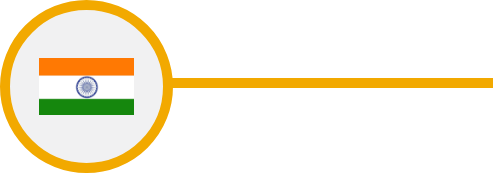BACKGROUND
India accounts for about a quarter of the global TB burden with an estimated incidence of 2,590,000 TB cases and 124,000 MDR/RR-TB cases as of 2020. TB kills approximately 480,000 Indians every year, i.e., more than 1,400 every day. India also has more than a million ‘missing’ cases every year that are either not notified or remain undiagnosed or unaccountably and inadequately diagnosed and treated in the private sector. [1] , [2]
India was on the up-hill trajectory of notifying TB with a peak of 2.4 million case in 2019. Due to the COVID lock down in India, like in many other countries, notification tumbled by 25% in 2020. However, since India has a very strong TB notification system NIKSHAY, India was able to recognize the decline in TB notification early during the pandemic and mount efforts to mitigate this on priority through TB and COVID bi-directional screening and testing, augmenting laboratory services, and treatment capacity upgrades. [3]
The national Strategic Plan 20017-2005 (NSP 2017-2025) proposes bold strategies with commensurate resources to rapidly decline TB incidence and mortality in India to SDG target levels by 2025, five years ahead of the global timelines. A major activity for the programme was to set up a state of art TB surveillance system and integrate it into the existing Nikshay platform. [4]
As per the NSP 2017-2025, effective ICT support will be the cornerstone for facilitating engagement, user-friendly patient reporting, people centric treatment adherence monitoring, and for smooth financial transactions. The e-Nikshay platform, supported with efficient call centers and provision of sufficient digital tools to field staff and providers, is key to reaching patients in private sector. Adherence system using ICT platform is also being strengthened with the use of additional tools such as 99 DOTS, Pill box etc. [4]
NIKSHAY platform is one of the most evolved and advanced TB surveillance platform that was developed by National TB Elimination Programme (NTEP) and National Informatics Center (NIC). It has been rolled out across the entire country for TB notification and monitoring of patients through the entire continuum of care at all levels. NIKSHAY platform is much more than just a TB surveillance system. It has various innovations and integrations which sets an example for other countries to learn from.
Starting with presumptive TB enrolment and referral for testing, progressing through laboratory diagnosis and notification, drug prescription, supporting adherence to treatment till successful outcomes and providing opportunities for post-treatment follow up for long-term, it also has integration with Laboratory Information Management System (LIMS), Prevent-TB India contact-tracing and TPT app, Nikshay Aushadhi (the drug supply chain web and mobile application), PFMS, (the Public Finance Management System that supports direct benefit transfer (DBT) , financial transaction of patient enablers and provider incentives). Various innovative modules and integrated solutions that uses the NISHAY backbone such as Arogya Sathi app (aimed at proactively increasing awareness among the citizens and ensuring availability of free and quality assured drugs), and Nikshay Sampark (the patient support call centre for grievance redressal) and adherence monitoring tools such as 99 DOTS.
Technology penetration plays a crucial role in providing enabling ecosystem to foster digital innovations. As of January 2021, the country has nearly 79% of the population having a mobile phone, and 54% using smartphone. India also has 45% internet penetration which has grown by 8.2% against previous year. This provides a very conducive environment a strong foundation to implement advanced solutions and ensure adequate uptake. [5] , [6]
Based on the multi-stakeholder discussions, interviews and independent research, and guidance from the National TB Program, this assessment report is an attempt to describe the current capacity and identified gaps/ challenges in the digital ecosystem of TB surveillance. The report shares strategic recommendations for developing a comprehensive case-based surveillance system in the country while leveraging the existing infrastructure, in-house capacity, and assets.

BRIEF OF DIGITAL CASE BASED TB SURVEILLANCE SYSTEM
India uses NIKSHAY platform as the national case-based TB notification and surveillance that is scaled to all TB units and facilities across the country. In 2012, India began its transition towards a digital TB ecosystem with the introduction of the NIKSHAY platform. Over the years this platform has evolved incrementally and has become a real time case-based TB information management tool which is used by both public and private providers in the country.
The central TB Division (CTD) of Ministry of Health and Family Welfare and the NIC have jointly developed Nikshay. To support development and maintenance and to provide technical guidance, there is a core team in CTD supported by WHO India and Bill and Melinda Gates Foundation. Since Nikshay is in continuous evolution, users are regularly alerted on new features through the link https://nikshay.zendesk.com/hc/en-us/articles/360016723931-What-s-New with corresponding online training materials through https://nikshay.zendesk.com/hc/en-us publicly available in Nikshay website https://www.nikshay.in/.
NIKSHAY system is fully accessible to the private sector also. After a self-initiated or facilitated registration in the system, private facilities are provided with access to full cascade of care of patients notified by them.
NTEP publishes real time TB notification report in the website national, state, district, TB Unit level, both for notification from public and private. https://reports.nikshay.in/Reports/TBNotification . NTEP also publishes quarterly reports “Nikshaypatrika” and annual TB report on the website https://tbcindia.gov.in/
Apart from publicly available data and reports, Nikshay system has autogenerated analytics, reports and feedbacks provided to programme managers at all levels.
India has been one of the pioneers countries to conceptualize a digital solution to cover the entire TB care cascade for real time case-based surveillance.
With the launch of Nikshay version 2.0 in 2017, the NTEP has fast expanded the engagement with private sector resulting in a remarkable increase in TB notification. Along with this, active case finding (ACF) strategies supported by Nikshay, 0.7 million cases have been additionally notified by 2019, with a 40% jump compared with 2017, significantly narrowing the gap in treatment coverage. With dashboards available at all levels from peripheral users to the national policymakers, Nikshay has been pivotal in empowering local administrative TB responses by take locally appropriate decisions. During Covid-19 lockdowns, Nikshay has been the warfare tool in daily monitoring of TB notification and treatment adherence at all levels of the programme management units, enabling the country to rapidly catch-up TB care and minimize impact.
The NTEP has also used Nikshay data along with TB drug-sale surveillance, variance in number needed to test in measuring under reporting and decline in incidence to render subnational disease free certification for eligible districts and states. The most remarkable aspect of this tool is its massive scale of implementation, that receives data from all over the country, prominently on a real-time basis making it the largest real time TB surveillance system in the world.

ELECTRONIC TB NOTIFICATION DATA COLLECTION AND USE
| TARGET | CURRENT SCALE | COLLECTION TOOLS | DATA TYPE | DATA USAGE | |||
|---|---|---|---|---|---|---|---|

National Level
|
Data Not Collected at this level
|
NIKSHAY Dashboard | |||||

State
level
|
36 | Data Not Collected at this level | NIKSHAY Dashboard | ||||

District
Level
|
718 | Data Not Collected at this level | NIKSHAY Dashboard | ||||

Facility level
|
All public and private TB facilities | 39136 public facilities (and 244508 private providers) | NIKSHAY Web App | Case Based | NIKSHAY Dashboard | ||

Community Level
|
Outreach workers/STS/ STLS | Across country | NIKSHAY Mobile App | Case-based | NIKSHAY Dashboard | ||

CASCADE OF CARE MONITORING
PRESUMPTIVE SCREENING
TB Testing
Treatment Initiation
Treatment Monitoring
Treatment Outcome
Contact Tracing






| KEY DATA VARIABLES | Yes/No |
|---|---|
| Demographic details (Age, DOB, Gender) | 
|
| Address and contact details (Country, Division, District, House address) |

|
| Geolocation (GPS coordinates of the household) |

|
| Contact details (Phone number/Mobile number, WhatsApp, Email etc.) |

|
| Health Facility address |

|
| Type of health facility (Public, Private etc.) |

|
| Site of TB (Pulmonary, Extra-pulmonary) |

|
| Type of diagnostic test (Microscopy, GeneXpert, TruNaat, CXR, etc.) |

|
| Date of test result |

|
| Drug susceptibility (DSTB, DRTB) |

|
| Treatment Regimen |

|
| Treatment start and end date |

|
| Co-morbidity (HIV, Diabetes, COVID-19 etc.) |

|
| Treatment monitoring/adherence |

|
| Treatment outcomes |

|
| KEY INDICATORS | Yes/No |
|---|---|
| Presumptive screening (proportion) |

|
| Treatment initiation (proportion) |

|
| Treatment monitoring/adherence |

|
| Treatment outcome (proportion) |

|
| Spatial distribution of TB notification | |
| Age-group & sex wise aggregate numbers and proportions notified |

|
| Basis of diagnosis wise aggregate numbers and proportions notified |

|
| Type/site/drug resistance wise aggregate numbers and proportions notified |

|
| Provider source-wise aggregate numbers and proportions notified |

|
| Comorbidity wise aggregate numbers and proportions notified |

|
| Key-population wise aggregate numbers and proportions notified |

|
| Estimate/Target wise notification/treatment coverage (proportions) |

|
| Provider-type disaggregated treatment outcomes (proportions) |

|
| Comorbidity disaggregated treatment outcomes (proportions) |

|
| Key population disaggregated treatment outcomes (proportions) |

|
 Digital
(aggregated)
Digital
(aggregated)
STATUS OF ELECTRONIC CASE BASED TB SURVEILLANCE
Electronic System For Case Based TB Notification
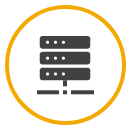
NIKSHAY
Lowest Unit For TB Notification Digitisation
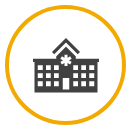
Facility level
Stage Of Notification

Diagnosis
Level Of Access And Use Of TB Notification Data
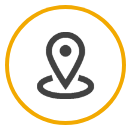
Facility level
Private Sector Notification

Patient Provider Support Agencies (PPSAs) and Private facilities with access, report Individual cases in NIKSHAY
Frequency of digitization of TB notification

Real time
Mode Of Follow-Up With Notified Cases
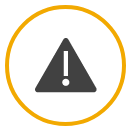
SMS follow ups, Dedicated call centre, Home visits
Scale Of Implementation
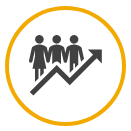
National roll out
Contact Tracing For TB Notified Cases
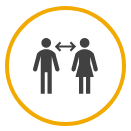
Currently done through Prevent TB app (Pilot in Kerela and Chhattisgarh); will transition to NIKSHAY
Multi-Channel Enablement

NIKSHAY has a desktop as well as mobile app for data reporting; a patient centric app has also been introduced
Govt. order for mandatory TB notification

Yes
PRIVATE SECTOR NOTIFICATION

Private sector clinics and general practitioners have a complete access to NIKSHAY and are mandated to notify all TB cases being identified and/or put on treatment. Patient Provider Support Agencies (PPSAs) are also supporting in getting the private cases notified in NIKSHAY. 30% of the total TB notified is by private sector and the treatment outcome is reported in NIKSHAY by the private sector either directly or through PPSA.
COUNTRY IT CAPACITY
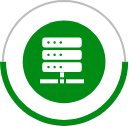
Country Server
Servers are hosted by the National TB Program, and managed by the in- house IT team
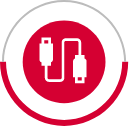
Interoperability
NIKSHAY platform allows an integration with other tools through APIs and Data Export mechanisms. Already integrated with LIMS
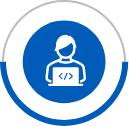
Country IT team
National TB program has an IT team to handle server and maintenance. App development is outsourced to Everwell.
CURRENT RESOURCES AVAILABLE
The Global Fund has granted USD 280 million for the period of 2020-2022 to advance tuberculosis prevention and control in India.
Nikshay platform is supported by domestic resources and by Bill & Melinda Gates Foundation (BMGF)
A number of supportive digital applications linked to NIKHSAY including Digital Adherence technologies, CLM tools etc. are being supported by agencies like USAID, Stop TB partnership, Global Fund, Wadhwani AI etc.

MILESTONES ACHIEVED AND ROAD MAP
2012
Launch of NIKSHAY first version (Digital TB register)
2012
Data entry in eTB manager scaled to 30 sites
2012-18
Application enhancement, Addition of inventory management module (NIKSHAY Aushadhi), NIKSHAY mobile app launch
2018
NIKSHAY 2.0 launch, Introduction of Direct Benefit Transfer module
2019
Development and introduction of NIKSHAY Dashboard, further enhancement of application ecosystem, LIPMS lab management system launch and integration
2021
Launch of patient and citizen centric app (TB Arogya Sathi), Addition of NIKSHAY drug dispensing module.
2022
Integration of PVPI (Pharmacovigilance module) and development of contact tracing module in NIKSHAY.
2023
Use of AI and data analytics and predictive modelling tools, Scale up of CXR AI modules

OTHER COMPLEMENTING DIGITAL TOOLS
| Purpose | Tools | Channel | Developed By | Supported By | Scale |
|---|---|---|---|---|---|
| Digital Adherence | Nikshay Adherence module | Web Application | Everwell | USAID | National |
| 99DOTS | Mobile application | Everwell | USAID | Pilot | |
| MERM Box | Smart Med Containers | Everwell | USAID | Pilot | |
| Logistics Management Tool | NIKSHAY Aushadhi | Web Application | CDAC | CDAC | National |
| Laboratory Information Management | LIMS | Web Application | FIND | The Global Fund | National |
| Qure.Ai CXR | Web Application | Qure.Ai | The Global Fund | Pilot | |
| Community Led Monitoring (CLM) | Arogya Sathi
(NIKSHAY) TB Mitra |
Mobile App Mobile App |
Everwell
Dure Technologies |
USAID | In the process of integration |
| Contact Tracing | Prevent TB | Web Application | Dure Technologies | WHO | Pilot |

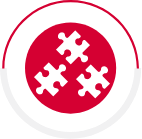

KEY CHALLENGES

Transitioning into paperless reporting of certain features in the programme remains a challenge. Though Nikshay is capable of this transition, issues with integration and operation delay this transition. Paper is still used for referrals, specimen transportation and reporting and treatment adherence monitoring.

Scaling up of real-time data directly from different devices such as GeneXperts and TrueNAT and DST laboratories to Nikshay.

LIMS is functional only in reference laboratories .

Collecting real-time data on diagnostic tests (especially complete address of patients) from the TB laboratories in the private sector though notification from these laboratories has been improving.

Tracking adverse drug reactions (ADR). However, the module for ADR monitoring is being developed.

NIKSHAY produces large data base which need to be further analyzed using advanced analytical and data science approaches and predictive modeling.

Linking other external data sources such as National Integrated Disease surveillance systems (IDSP), Integrated Health Information Platform (IHIP), HMIS, Vital Registration system, SIMS HIV data system etc.
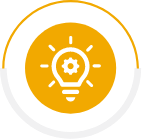
NTP VISION
- ❖ India has not only envisioned a comprehensive digital TB surveillance system but has also demonstrated that such systems can be implemented at scale at the lowest level of health facilities despite of huge infrastructure and other socio-economic barriers. As per the National Strategic Plan 2017-2025 put forth, India plans to leverage it’s existing NIKSHAY platform as a foundation to develop and integrate various other innovation that can be taken up to scale. Some of them are indicated below:
- ❖ Further enriching the NIKSHAY analytics platform with more granular patient level and aggregated data for decision making and planning.
- ❖ Further integrating other innovative solutions like Presumptive screening and contact tracing module, AI based CXR integration and community led platforms such as Aarogya Sathi app. and taking it to scale.

RESOURCES NEED
Based on multi-stakeholder discussions, country feedbacks and recommendations for full-filling country’s vision, we have put together an estimated investment requirements and areas needing support for provisioning of a comprehensive case based digital TB surveillance system
Hardware and Infrastructure :

Server/cloud: Based on the current volumes of new cases, would need an investment of USD 500,000- 600,000 for next 3 years for server and server maintenance. Alternatively, cloud based comprehensive service may be hired with pay-as-you-use arrangement, which can reduce the task of seamless management of hardware and environment.
Software Development :

Based on various multi-stakeholder meetings and given the fact already have a strong foundation of a case-based reporting nationally, around USD 800,000-1200,000 should be budgeted for comprehensive TB surveillance system development and analytical dashboard for data use. Supportive applications and software like ms-sql, asp.net, php, android kit, gis applications etc can be included in the cloud based comprehensive service.
Capacity Building and Implementation :

After the software development, a dedicated system admin and a developer should ideally be budgeted. The existing IT resources should be continued. A rough ongoing recurring cost of USD 200,000- 300,000 should be budgeted for 3 years for technical support.
TOTAL investment of around USD 2 Million for 3 years will be needed on developing a comprehensive case-based digital TB surveillance system for India.
Disclaimer: The above budget is a function of number of facilities, districts and regions and expected volume of data. This only provides a ballpark figure of what is needed in terms of budget.

Recommendations
Following are some of the key recommendations suggested based on the findings of this assessment of country’s digital ecosystem and infrastructure:

Data Use
Advanced data science, big data analytics and AI based predictive modelling should be leveraged for forecasting demand for testing and treatment and help planning resource utilisation better.
The data use should also use GIS based hotspot mapping and AI based hotspot predictions to enable epidemiological monitoring.
It should also focus on vulnerability and risk profiling of the patients so that highest risk patients such as patients with high-risk behaviour, nutrition needs, co-morbidity factors or migration factors can be prioritised for closer monitoring and differentiated care.
Granular outputs of these initiatives must be linked and used for individual patient care with action-oriented reminders, alerts and feeds to patient, family and providers as well as related stakeholders.
Tentative timeline: Month 0-12

Scaling up AI for TB elimination
CTD is also piloting TRACE-TB (Transformative Research and Artificial Intelligence Capacity for Elimination of TB and Responding to Infectious Diseases) with support from USAID with the ambitious aim of eliminating TB from India by 2025. The work can be leveraged for
o Using AI to read Line Probe Assay (LPA) to improve efficiency and minimize errors.
o Identifying patient behavior patterns to identify those at risk of being Lost to Follow Up (LFU), case fatality, drug resistance and other unfavorable outcomes.
o Cough sound based and voice-based AI tool for screening of tuberculosis which can be used by citizens using Arogya saathi mobile app.
o Automated reading of digital chest x-rays across the country for alerting the providers for TB testing.
o Image processing algorithms for automated reading of skin tests for diagnosis of latent tuberculosis
o AI based chatbots for citizens, programme staff as well as health care providers for instant solutions and information sharing for faster solutions.
o AI based forecasting of TB drugs requirement for procurement planning, prediction of local drug stock requirement for inventory management and prediction of multi-level stockout and suggestion of action including stock transfer etc.
o AI based prioritization of target population for TB Active Case Finding.
o Algorithmic use of vast information of Nikshay to be used for automated mathematical modelling for burden estimation at local level especially TB unit and district level.
Tentative timeline: Month 6-12

Development of more comprehensive e-Learning and Decision Support System (DSS)
AI based decision support system tools can also be used for assisting both medical and non-medical professionals such as outreach workers for sputum collection, lab users or treatment initiators and others to provide a protocolised step by step assisted guide.
Advances in Artificial Intelligence and Machine Learning algorithms should be explored to provide a more intelligent and intuitive assistance to health staffs for example automated daily tour routes to treatment supervisors for maximum impact based on existing data in their TB units. This will not only help in improving services but also help in reducing the work burden and help staff focus on actual care.
Tentative timeline: Month 6-9

System Integration
One of the challenges highlighted by NTP is the leveraging the data collected from the multiple sources (like GeneXpert) into the main eTB manager system as a central data repository for effective use.
NIKSHAY has already established integration with external systems, like GeneXpert, TruNat, DBT, 99DOTS, etc. and have plans to integrate AI readings from Chest X-Rays. Additionally, the LIMS integration already in place should be expanded across the country so that all labs are connected to NIKSHAY database facilitating real-time lab data exchanges helping in real-time TB notification at diagnostic stage. Additionally, this integration should enable NTP to establish a molecular epidemiological surveillance system by gathering information on bacillary lineages and strains from the whole-genome sequencing laboratories and the multitude of mutations being captured at various central molecular diagnostic laboratories.
Nikshay should also be integrated with COVID-19 application of ICMR so that bidirectional screening and testing can be implemented more effectively. If other initiatives like NCD-TB screening application is integrated with Nikshay, it can be helpful increasing the case finding efforts as granular individual information on eligible presumptive TB can be sought across the country by NTEP out of community-based screening of population. Similarly, it is a long due for Nikshay to be integrated with e-PDS so that the TB patients and families can be linked with additional ration and food supplies. We recommend that these integrated systems are scaled up through standard with integration and security protocols such as FHIR/HL7 in addition to in-country Meta-Data and Data Standards (MDDS) and EHR / EMR standards of Health Ministry.
Though NIKSHAY already follows a strong national data security and privacy guidelines of National Informatics Center and hence other security guidelines should be explored based on need assessment and detailed evaluation. In addition, GDPR standards for more secured and seamless data collection and storage should be also explored.
Tentative timeline: Month 6-18

Expansion and integration of the
N-TB Nutrition
App
We recommend to integrate the N-TB nutrition app as one of the integrated modules within NIKSHAY which can enable healthcare workers to assess nutritional status of patients with TB, estimating the weight gain required to reach an acceptable or optimal body mass index, and provides counselling tips on diet and an approximate daily calorie intake required for nutritional recovery.
Localized and customized diet charts based on the nutritional assessment may be included with pictoral suggestions to patients. The App is currently a stand-alone app but having it integrate with NIKSHAY will help treatment providers to capture nutritional status along with other risk and co-morbidity factors at the treatment initiation stage itself thus helping in recommending patients with appropriate nutritional support and further monitoring.
Tentative timeline: Month 6-12

Scale up of Patient Centric
Systems and CLM
platforms
NIKSHAY has taken a huge leap in creating patient centric systems such as Aarogya Sathi and TBMitra App in past. Community led monitoring and community participation is crucial to achieving the TB elimination target of 2025.
Either an extension of Aarogya Sathi App or integrating it with another TB CLM platform is strongly recommended which will provide a one-stop-shop for TB patients and people at high risk to get services they need.
The Patient centric platform can also integrate with platforms like such as medicine reminders, adverse drug side effect reporting etc.
Tentative timeline: Month 1-12

Pharmacovigilance integration
with NIKSHAY
It is also recommended to integrate the National Pharmacovigilance system with the NIKSHAY platform to monitor and report adverse drug side effects specially for both new and generic TB drugs.
The Pharmacovigilance module should not only facilitate in reporting cases at facility and district level but should also be integrated with the patient centric platform recommended previously so that drug side affects can be self reported by the communities themselves.
Tentative timeline: Month 3-8

Data Quality Audit
While Nikshay is well set and implemented across the country, it is important to ensure data quality on an ongoing basis and regular data quality audits should be undertaken preferably using third party assessment mechanisms by agencies like WHO.
Tentative timeline: Month 6-24
ACKNOWLEDGMENT
We thank the Joint Director (TB), Dr Nishant Kumar and the entire NTP team and partners for participating and engaging in the assessment. We would also like to extend our gratitude to Dr Vaibhav Shah for providing valuable insights into India’s journey with Nikshay and vision for creating an integrated health information system.
CONTACT DETAILS
Central TB Division, Second Floor, Jeevan Vihar Building, 3 Sansad Marg, Connaught Place, New Delhi – 110001, India
Telephone : +91 011 2306 3226
Email : ddgtb@rntcp.org
Website: https://tbcindia.gov.in/
REFERENCES
- TB Data References : https://worldhealthorg.shinyapps.io/tb_profiles/?_inputs_&entity_type=%22country%22&lan=%22EN%22&iso2=%22BD%22.
- TB Data References : http://www.stoptb.org/countries/tbdata.asp.
- NIKSHAY Training: https://nikshay.zendesk.com/hc/en-us.
- NSP Plan: https://www.usaid.gov/global-health/health-areas/tuberculosis/resources/news-and-updates/global-accelerator-end-tb/tb-roadmaps/indonesia.
- Digital Landscape : https://datareportal.com/reports/digital-2021-india.
- Digital Landscape : https://www.statista.com/statistics/1229799/india-smartphone-penetration-rate/
